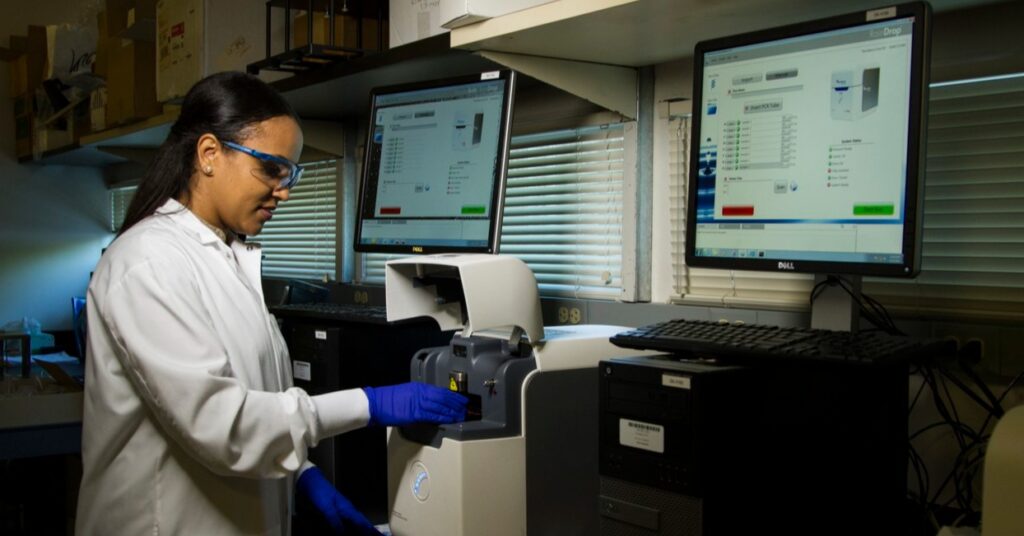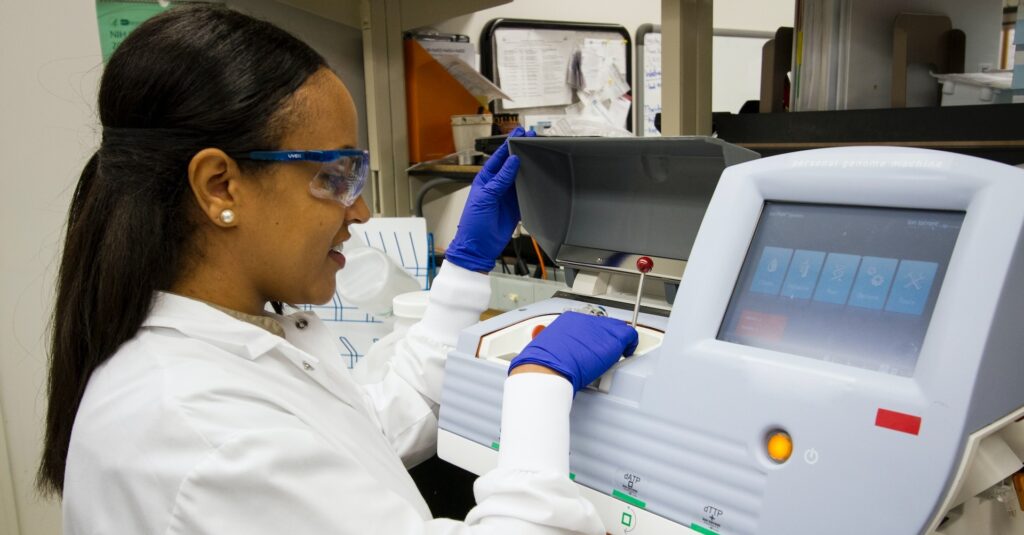
What Is the Epidemiological Triangle?
The epidemiological triad or triangle is an organized methodology used [...]

Many aspiring occupational therapists come to the Keystone State to earn their degrees; there are compelling reasons to consider joining them. For one: Pennsylvania is home to nine of US News & World Report’s top 100 occupational therapy schools. The University of Pittsburgh ranks highest among them, holding the nation’s number three spot for its OT degree programs.
All occupational therapy degree programs accredited by the Accreditation Council for Occupational Therapy Education (ACOTE) must meet American Occupational Therapy Association (AOTA) standards. So, whether you come to Pennsylvania because the University of Pittsburgh is your dream school or you choose PA because it’s the fourth-largest employer of OTs in the US, chances are you’ll find a program you love.
In this article about occupational therapy schools in Pennsylvania, we cover:
The first step toward becoming an occupational therapist is earning a four-year bachelor’s degree. While there are pre-OT programs at schools like The University of Texas at Austin and the University of Colorado Boulder, more often aspiring OTs major in related topics like biology, kinesiology, or health sciences.
The next step is earning an advanced degree in occupational therapy at an accredited college or university. All OTs need at least a master’s degree in occupational therapy to practice—typically either a two-year Master of Occupational Therapy (MOT) or a Master of Science in Occupational Therapy (MSOT). Some aspiring OTs opt instead for an entry-level Doctor of Occupational Therapy (OTD). These programs are similar to MOT programs and are treated as equivalent by most hiring managers.
Both MOT and OTD holders are eligible to sit for the National Board for Certification in Occupational Therapy (NBCOT) certification exam and apply for state licensure.
Graduate-level occupational therapy degree programs come in two varieties. Entry-level OT degree programs serve students with bachelor’s degrees but no professional occupational therapy experience. There are both entry-level MOT programs and entry-level OTD programs.
Post-professional programs, on the other hand, are for certified or board-eligible occupational therapists. Some began working when it was possible to become an OT after completing a bachelor’s program; others merely want to refine their clinical skills and take their leadership skills to the next level. There are post-professional master’s degree programs for occupational therapists, but the post-professional OTD is much more common.
The most significant difference between entry-level OT programs and post-professional OT programs is the material covered at both the master’s degree and doctoral levels. At the University of Pittsburgh, for example, students in the three-year, nine-term entry-level OTD program take courses like:
The core courses in the school’s post-professional Doctor of Clinical Science in Occupational Therapy program look quite different. Students in that doctoral program follow an OTD curriculum that includes courses in:
Aspiring OTs have to choose between the entry-level master’s degree and the entry-level doctorate—which are usually administered by a school’s College of Health Sciences. It’s not exactly an easy decision to make. Some lean toward the MOT because they’re more common than OTD programs and most master’s degree programs for OTs can be completed in less time than occupational therapy doctorate programs. They also tend to cost less.
On the other hand, ACOTE has considered mandating doctoral-level degrees for new OTs more than once, and there will likely come a time when the OTD becomes the only entry-level degree in this field. More importantly, an occupational therapist with a doctorate—even a newly minted OT—may be able to advance into higher-paying positions more quickly than one with an MOT because doctoral programs give students additional research opportunities and more clinical experience.
There’s no right answer. Only you can decide whether getting to work faster or gaining more experience before you start working is more important.
There are 16 ACOTE-accredited occupational Therapy schools in Pennsylvania:
This school has both a five-year Bachelor of Science in Health Science/Master of Science in Occupational Therapy program and an entry-level MSOT program transitioning into an entry-level OTD program. Students in the OT program gain knowledge and skills through fieldwork hours and clinical learning experiences integrated into core courses.
Chatham University has offered accredited entry-level OT graduate degree programs for 25 years. Today, these programs have a 99 percent NBCOT pass rate and a 100 percent job placement rate. The full-time, cohort-based entry-level Doctor of Occupational Therapy at this school takes 32 months to complete. The post-professional OTD can be completed in just 16 months. There’s also a BS-to-OTD program for experienced occupational therapists who hold a bachelor’s degree in occupational therapy. Students in all three programs gain real-world experience during a required doctoral project in a specialty area and receive various opportunities to hone their leadership skills during the program.
Duquesne University’s John G. Rangos Sr. School of Health Sciences has the highest-ranked five-year accelerated BS/MSOT program in western Pennsylvania. Students can also choose from among entry-level MS and OTD programs and post-baccalaureate MS or OTD programs. Class sizes are small, the program includes an anatomy course with a cadaver dissection component, and all students receive mentorship and professional development opportunities. Many students publish before graduation. The program has a 99 percent employment rate.
Elizabethtown College offers both a five-year BS in Health/MS in Occupational Therapy program and a six-year, nine-month BS/OTD program. Both programs are highly selective; students apply and are accepted into the OT programs as freshmen. There’s no need to reapply for the graduate program. Etown professors are seasoned clinicians, students average one day a week in experiential learning settings, there are opportunities to present original research in real-world settings, and service is emphasized throughout the curriculum.
Gannon University has three master’s-level OT programs:
In all cases, students gain experience through clinical fieldwork courses and service-learning experiences. The occupational therapy program is one of the few that offer departmental scholarships for the program’s last year. Students can also help finance their degrees through OT-focused student worker positions assisting faculty in labs and lecture courses.
The 77-credit, six-term MSOT at Gwynedd Mercy University is offered through the Frances M. Maguire School of Nursing and Health Professions. It’s one of the few programs in the region that offer dual degrees in occupational science at the bachelor’s level and occupational therapy at the master’s level. Students in the MSOT program have access to state-of-the-art classroom and practice labs, receive individualized faculty advisement, and graduate with a virtual portfolio of their achievements in OT.
Messiah College only offers two OT options:
This college stands out among occupational therapy schools in Pennsylvania for its state-of-the-art educational facilities, tight-knit cohort-learning model, focus on community service and leadership development, and pediatric labs and cadaver labs. It is also one of the few nationally ranked, accredited private Christian universities offering an OT program.
There are multiple ways to earn an OT degree at this school, which has entry-level master’s and doctoral degree programs and post-professional degree programs at the master’s and doctoral levels. The school boasts two standout qualities. First, it has one of the few weekend-only entry-level master’s programs in occupational therapy—a three-year program that meets every other weekend and is designed to meet adult learners’ needs. Second, students in the combined undergraduate/graduate program can wait until junior year to decide whether to pursue an MSOT or an ELOTD.
The Department of Occupational Therapy in Saint Francis University’s School of Health Sciences and Education excels in its commitment to providing students with pre-professional and professional experience. It offers an accelerated 3+2 Bachelor of Science in Health Science, leading to a Master of Occupational Therapy and a standalone MOT program with a built-in psychology minor. There are study abroad opportunities for OT students, OT-focused clubs and student-run organizations, and a specialized honor society for occupational therapy students and alumni.
The Department of Occupational Therapy at Salus University offers both professional and post-professional degree programs, including an entry-level MSOT, an OTD for experienced occupational therapists, and specialty certificates for OTs in low-vision rehabilitation and remedial-vision rehabilitation. All three programs prioritize inter-professional educational experiences. Aspiring OTs and licensed OTs enjoy opportunities to connect and work with students and professionals from other healthcare disciplines.
The 80-credit, full-time MOT program at Tempe University is administered by the school’s College of Public Health. It’s in the process of transitioning to an entry-level doctoral degree. The emphasis of this program is squarely on clinical education. Students are put into supervised fieldwork placements in year one. The curriculum includes a summer community practice course that involves working closely with and developing programming to meet the needs of a population. This program’s graduation rate is over 96 percent, and the post-graduation employment rate is 100 percent.
According to US News & World Report, this is the sixth-best occupational therapy school in the nation. The Department of Occupational Therapy maintains programs on its Center City and East Falls campuses. It offers an Associate of Science in Occupational Therapy, an accelerated 3+3 BS and OTD program (with the option of a health science or psychology major), a two-year entry-level MSOT, an entry-level OTD, a post-professional OTD, and advanced practice certificates in specific areas of occupational therapy. Students in the program have access to multiple clinical and fieldwork experiences, including simulations and volunteering opportunities.
The highly ranked Department of Occupational Therapy at UPitt is nearly done transitioning its MOT to an entry-level doctoral degree. There are now:
Students who graduate from this program have a higher-than-average NBCOT pass rate and become clinical specialists, administrators, managers, researchers, educators, and business owners.
Students in UScranton’s Occupational Therapy Department can choose between a five-year, entry-level, Master of Science degree program in occupational therapy, or six-year entry-level OTD program. State-of-the-art facilities include an independent living apartment, a sensory motor-exploratory play environment, and fully stocked lab facilities. Fieldwork follows related practice courses, and students can pursue their own research under faculty mentors’ supervision.
Students at this school can choose from among the six-year BS in Health Science/clinical OTD program, the three-year OTD program, and the two-and-a-half-year post-baccalaureate Master of Occupational Therapy program. Each pathway requires students to take six intervention courses rather than the usual three, allows students to get involved in grant-funded projects and research, and invites students to participate in collaborative international service-learning projects with healthcare professionals.
Tuition at the above occupational therapy schools in Pennsylvania varies from school to school. For instance, at Chatham University, the entry-level OTD program costs about $92,000, while the post-professional program costs just $31,000. Doctoral-level occupational therapy programs tend to be more expensive than master’s degree programs—some entry-level occupational therapy doctorate programs cost upwards of $100,000. Most post-professional OT programs cost around $50,000. The good news is that OT students can take advantage of all the usual forms of financial aid. Many schools have scholarships available for both undergraduate and graduate students.
You can’t legally practice occupational therapy in Pennsylvania just because you graduated from an ACOTE-accredited occupational therapy school. In PA, OTs are regulated by the State Board of Occupational Therapy Education and Licensure, and the board is responsible for licensing and overseeing the work of OT professionals in the state. There are two levels of OT licensing in PA—the Occupational Therapy Assistant license and the Occupational Therapist license. To be eligible for licensure, an occupational therapist must:
Before taking the NBCOT, occupational therapists who have earned a master’s degree in occupational therapy or OTD can apply for a temporary license. This allows them to practice under the direct supervision of a licensed OTR. At that point, your educational commitment is over and your career as an occupational therapist can officially begin. Once an OT is licensed in Pennsylvania, they’re licensed for life because there are no continuing education requirements in this state.
Questions or feedback? Email editor@noodle.com

The epidemiological triad or triangle is an organized methodology used [...]

A family nurse practitioner (FNP) provides comprehensive primary health care [...]

FNPs practice in a broad range of health care settings. [...]

Some epidemiologists assist pharmaceutical companies in developing safer medicines. Some [...]

A Bachelor of Science in Nursing (BSN) is a four-year [...]
Categorized as: Occupational & Behavioral Therapy, Nursing & Healthcare